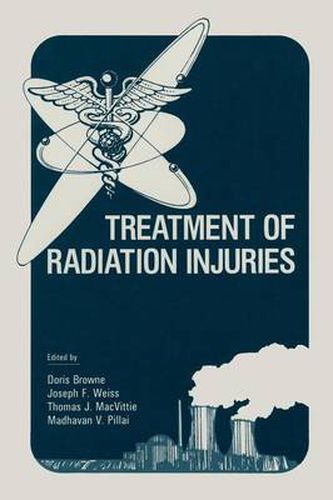Readings Newsletter
Become a Readings Member to make your shopping experience even easier.
Sign in or sign up for free!
You’re not far away from qualifying for FREE standard shipping within Australia
You’ve qualified for FREE standard shipping within Australia
The cart is loading…






This title is printed to order. This book may have been self-published. If so, we cannot guarantee the quality of the content. In the main most books will have gone through the editing process however some may not. We therefore suggest that you be aware of this before ordering this book. If in doubt check either the author or publisher’s details as we are unable to accept any returns unless they are faulty. Please contact us if you have any questions.
The proliferation of radioactive materials in industry, in diagnostic and therapeutic medicine, in scientific and medical research, in the military, and as a source of energy has increased the likelihood of accidental exposure to ionizing radiation. Further, the number of individuals exposed in accidents, such as Chernobyl, U. S. S. R. ; Goiania, Brazil; and San Salvador, El Salvador, underscores the potential for large-scale radiation accidents. Because of these accidents, health care providers have found themselves treating patients with acute radiation injuries and subsequent complications. Often the radiation injuries are combined with burns or other trauma and the infectious and immune complications associated with such injuries. The treatment of victims of these accidents has provided important information about the medical management of radiation casualties. However, development of techniques to improve the diagnosis and treatment of radiation injuries, to collect follow up data on survivors, and to determine the long-term effects of uncontrolled radiation exposure must continue. The Armed Forces Radiobiology Research Institute, Bethesda, Maryland, and its Medical Radiobiology Advisory Team sponsored the First Consensus Development Conference on the Treatment of Radiation Injuries in Washington, DC, on May 10-13, 1989. The proceedings of the conference are presented in this volume, which we hope will serve as a reference for clinicians and basic research scientists who require knowledge of the latest developments in the diagnosis and treatment of radiation injuries. This conference was designed specifically to address the areas of hematopoietic injury, infectious complications, and combined injury.
$9.00 standard shipping within Australia
FREE standard shipping within Australia for orders over $100.00
Express & International shipping calculated at checkout
This title is printed to order. This book may have been self-published. If so, we cannot guarantee the quality of the content. In the main most books will have gone through the editing process however some may not. We therefore suggest that you be aware of this before ordering this book. If in doubt check either the author or publisher’s details as we are unable to accept any returns unless they are faulty. Please contact us if you have any questions.
The proliferation of radioactive materials in industry, in diagnostic and therapeutic medicine, in scientific and medical research, in the military, and as a source of energy has increased the likelihood of accidental exposure to ionizing radiation. Further, the number of individuals exposed in accidents, such as Chernobyl, U. S. S. R. ; Goiania, Brazil; and San Salvador, El Salvador, underscores the potential for large-scale radiation accidents. Because of these accidents, health care providers have found themselves treating patients with acute radiation injuries and subsequent complications. Often the radiation injuries are combined with burns or other trauma and the infectious and immune complications associated with such injuries. The treatment of victims of these accidents has provided important information about the medical management of radiation casualties. However, development of techniques to improve the diagnosis and treatment of radiation injuries, to collect follow up data on survivors, and to determine the long-term effects of uncontrolled radiation exposure must continue. The Armed Forces Radiobiology Research Institute, Bethesda, Maryland, and its Medical Radiobiology Advisory Team sponsored the First Consensus Development Conference on the Treatment of Radiation Injuries in Washington, DC, on May 10-13, 1989. The proceedings of the conference are presented in this volume, which we hope will serve as a reference for clinicians and basic research scientists who require knowledge of the latest developments in the diagnosis and treatment of radiation injuries. This conference was designed specifically to address the areas of hematopoietic injury, infectious complications, and combined injury.